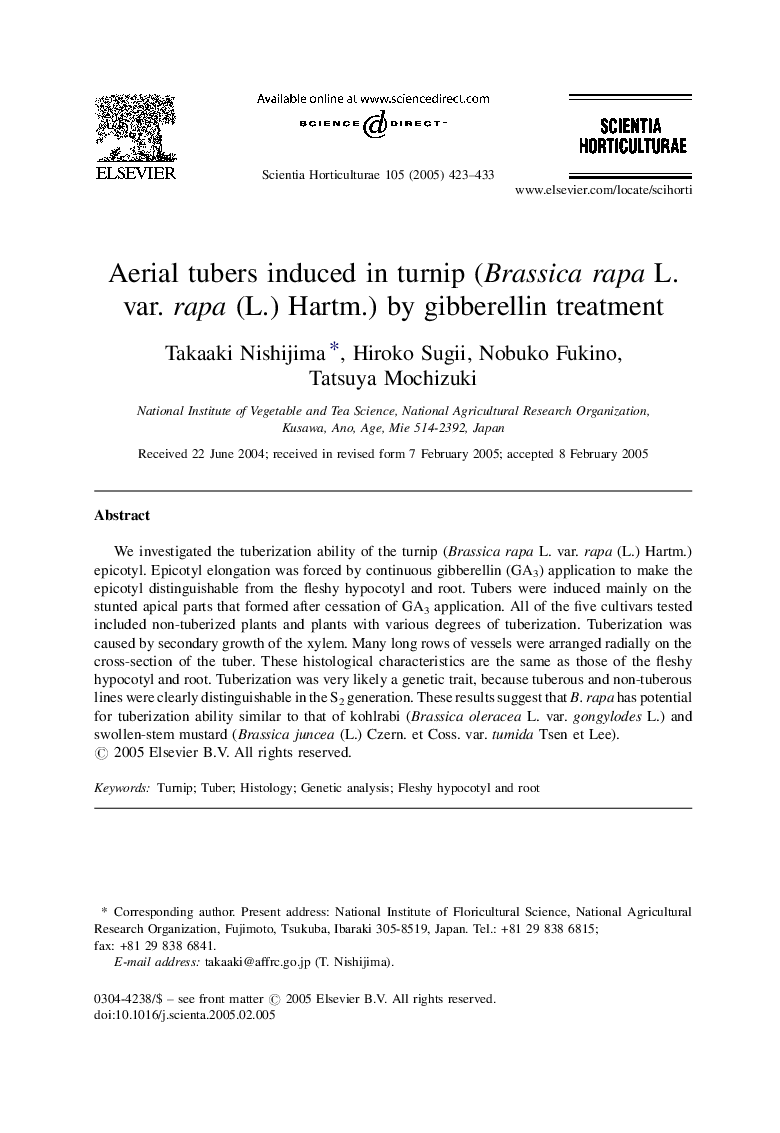| Article ID | Journal | Published Year | Pages | File Type |
|---|---|---|---|---|
| 9488928 | Scientia Horticulturae | 2005 | 11 Pages |
Abstract
We investigated the tuberization ability of the turnip (Brassica rapa L. var. rapa (L.) Hartm.) epicotyl. Epicotyl elongation was forced by continuous gibberellin (GA3) application to make the epicotyl distinguishable from the fleshy hypocotyl and root. Tubers were induced mainly on the stunted apical parts that formed after cessation of GA3 application. All of the five cultivars tested included non-tuberized plants and plants with various degrees of tuberization. Tuberization was caused by secondary growth of the xylem. Many long rows of vessels were arranged radially on the cross-section of the tuber. These histological characteristics are the same as those of the fleshy hypocotyl and root. Tuberization was very likely a genetic trait, because tuberous and non-tuberous lines were clearly distinguishable in the S2 generation. These results suggest that B. rapa has potential for tuberization ability similar to that of kohlrabi (Brassica oleracea L. var. gongylodes L.) and swollen-stem mustard (Brassica juncea (L.) Czern. et Coss. var. tumida Tsen et Lee).
Keywords
Related Topics
Life Sciences
Agricultural and Biological Sciences
Horticulture
Authors
Takaaki Nishijima, Hiroko Sugii, Nobuko Fukino, Tatsuya Mochizuki,
